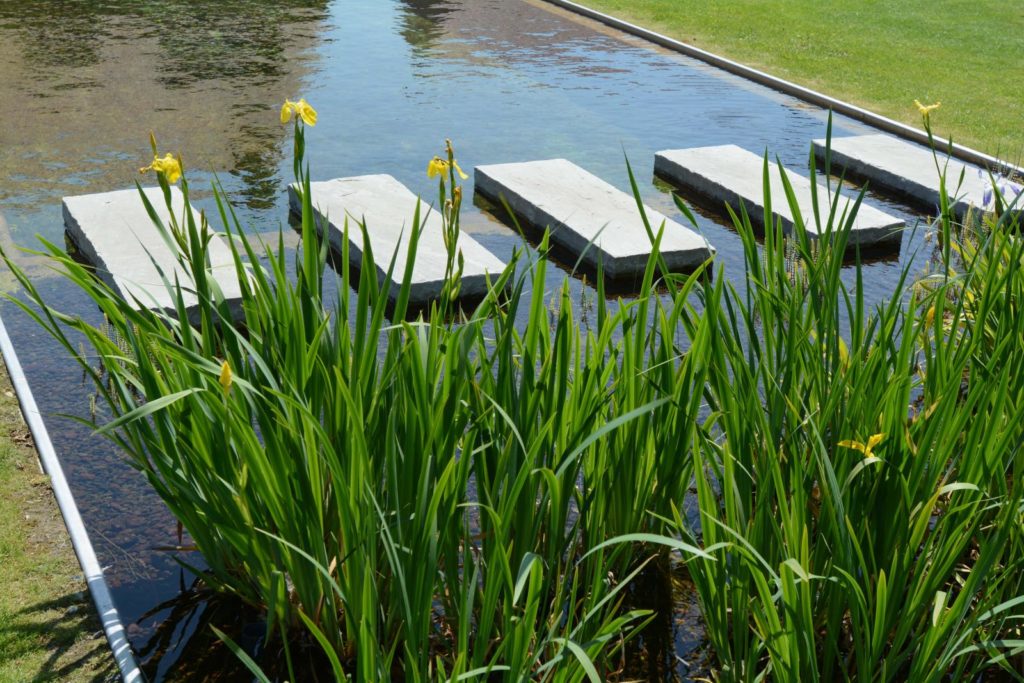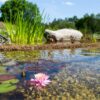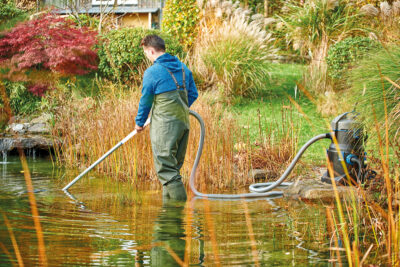A recreational swim pond is just what it says on the tin. On a broader scale, it’s a natural ecological pond. Imagine swimming in a natural pool, free of chemicals and harsh chlorine, with a natural feel to the surroundings and the sound of a lovely waterfall. A swimming pond provides this for people who appreciate them. So, let’s have a look at what a recreational swim pond looks like in greater detail.
A swimming pond is a body of clean water the size of a pool that you can swim in. Normally, they are made up of half aquatic plants and half water. To keep the water clean and clear, they use a natural filtration system. If you want to swim with the fish, you can put them in as well. They’re low-maintenance, don’t require chemicals or covers, and are less expensive in the long run than pools. The plants’ aid in the cleaning of the water and the control of algae.
Natural swimming pools and ponds may appear to be fairly similar at first glance, but there are some significant differences between the two. If you’re considering adding a lovely natural swimming feature to your home, you’ll want to know the difference between pools and ponds, as well as the advantages of each. The most significant distinction is in the water filtering technology. In a nutshell, a natural swimming pool uses biological filtration technology (rather than chemicals) to keep the water clean, but a swimming pond relies on a balanced ecosystem to keep the water pure without the use of filtration. Because of the differences in water clarity mechanisms, natural pools do not require any plant matter to stay clean, whereas a swimming pond requires at least 50% of its surface area to be planted in order to maintain the water clear. A swimming pond cannot be heated or covered since it maintains an environment, whereas a natural pool may.

For many families, the fact that a natural pool is naturally cleaner than a pond is a major selling factor. However, the energy requirements of keeping a natural swimming pool are likely to be higher than those of maintaining a swimming pond due to filtration and heating. These are only a few instances of the significant distinctions between pools and ponds, as well as the practical implications of understanding their costs and benefits.
The ecosystem of a swimming pond functions in such a way that bacteria and algae are consumed by microorganisms on the roots of the plants, which eliminates waste buildup such as fish excrement and clarifies the pool. Pool filters assist remove loose debris (stone fragments, silt, etc.) that are worn away from rocks, while plants feed on nutrients obtained from creatures, removing phosphorus and nitrogen before they can multiply. Wildlife will happily coexist with you and contribute to the pond’s complicated life cycle.
Some homeowners believe that bringing fish and other aquatic life to their backyard pond is a more important goal than swimming in it. It is completely acceptable to add fish to your backyard swimming pond even if you do not intend to install filters, however, this is highly advised. You will, however, need to adapt your plans for your fish to account for the natural form of care and livelihood you are providing. You’ll also need to take extra precautions when swimming to avoid injuring or disturbing the fish. Fish, on the other hand, will instinctively swim away from you.
As time passes, several minor requirements emerge to help protect the fish’s health and safety while swimming.
To begin, you will need to test the pond water on a regular basis to ensure that the PH level and dissolved oxygen level are within the proper specifications for the fish species you have chosen. Second, while calculating the volume of your pond, make sure to use low fish stocking rates. Swimming in the same water as the fish contributes to the filter bed’s water quality load (jest, gravel). Too many fish will pollute the water with ammonia, as well as the oil emitted by your skin when swimming. To balance the needs of both the fish and your swimming habits, aim for half or less of the maximum stocking rate in your pond. Finally, fish require medical attention on a regular basis to treat ailments. While the antibiotics are still circulating in the pond water, you cannot swim in it during or after treatment. Swimming in an insecticide- or antibiotic-treated pond can be harmful to your health. In the meantime, refusing to treat your fish will cause them to suffer from uncomfortable and irritating ailments.
You should leave the fish for another pond if you want to be able to use your swim pond throughout the summer without interruption. You won’t have to worry about water treatments or withdrawal periods as a result. You could, however, build another pond and relocate the fishes there during treatments before returning them to the swimming pond.
It is, however, recommended that house owners with the most basic and low-maintenance swimming ponds avoid adding fish. Insects, amphibians, and birds will continue to populate your pond as the aquatic plants in the pond mature and provide a magnificent habitat and food source. In a swimming pond, the depth should be between 50 and 70 feet so that you may swim without touching the bottom. However, it’s a good idea to set aside a separate space for oxygen-producing plants that’s 24 to 32 cm deep. They will make a significant contribution to good swimming water quality.
What shape and style is a swimming pond supposed to take is a commonly asked issue by homeowners. Swimming ponds come in a variety of shapes and sizes. Some swimming ponds resemble their chemically treated cousins, while others appear to be a secret swimming holes. The adaptability of these natural water features is what makes them so appealing. You’ll get a beautiful water garden feature as well as a swimming pond all in one.
Natural swimming ponds can be built to seem like traditional pools, but they are not the same. If you just dug a hole in your backyard and filled it with water, your pond’s water level will swiftly decrease and become murky. To function as a buffer between the pond’s bottom and the water, most swimming ponds have a clay or rubber liner layer. Water penetrates the earth without this layer, causing silt to obscure the water.
Natural swimming ponds come in all shapes and sizes, from ultra-modern designs to wild and rustic watering holes. Design a swimming pond that matches your existing landscape using your present scenery as inspiration. The pond is surrounded by container plants and trees, giving it a lush appearance. Potted bamboo, little water fountains, and plenty of seating create a relaxing environment.










